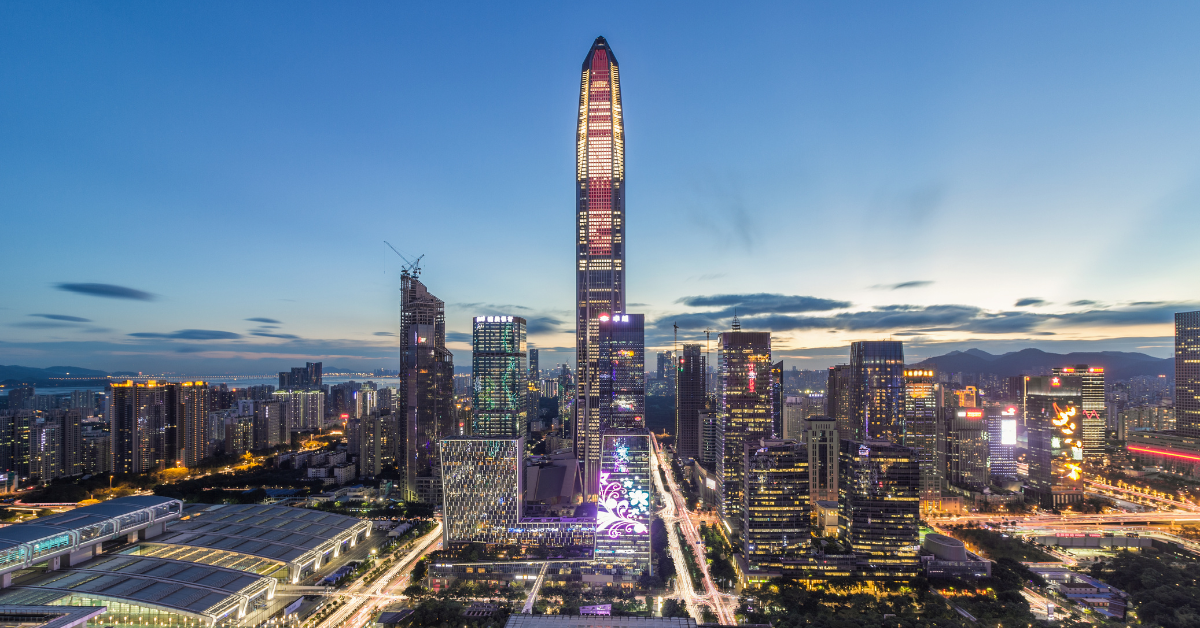Shenzhen, located in southern China, is officially written as “深圳.” However, since the character “圳” is not included in Japan’s JIS standard, it is generally written in katakana as “Shenzhen” in Japanese contexts. This article explores the background of this notation and examines the diverse images Japanese people have of Shenzhen.
The Correct Chinese Character Notation of Shenzhen “深圳”
The official name of Shenzhen is “深圳,” which is commonly used in daily life in China. The character “圳” means an irrigation channel for rice fields and often appears in place names in Guangdong Province. However, because it is not part of the Japanese list of commonly used characters or JIS standards, it is often difficult to input or display. As a result, the notation “Shenzhen” in katakana has become the mainstream representation in Japanese media.
The differences in notation can be summarized as follows:
| Notation | Context of Use | Feature |
|---|---|---|
| 深圳 | Official notation in China | Standard local character form |
| Shenzhen (カタカナ) | Japanese media and publications | Katakana prioritizes readability |
Although the notations differ, they both refer to the same city. Understanding both is important to avoid misunderstandings.
Shenzhen as an Economic City
Since being designated as a Special Economic Zone, Shenzhen has undergone rapid development. It is often called “China’s Silicon Valley” because of the concentration of cutting-edge technology industries. Not only does it host smartphone and semiconductor companies, but it is also home to numerous startups in EVs and AI, drawing attention from Japanese corporations as well.
The Shenzhen Stock Exchange, with its many listed emerging companies, is also a focus for Japanese investors. Furthermore, the city as a whole functions as a testing ground for new technologies, with everyday services such as unmanned convenience stores and facial recognition payments.
The way Japanese people perceive Shenzhen’s economy can be summarized as follows:
| Japanese Perception of the Economy | Details |
|---|---|
| Cluster of advanced technology | Global firms coexist with startups |
| Symbol of rapid growth | From fishing village to megacity in just 40 years |
| Attractive investment market | High expectations as an emerging market |
Shenzhen as a Living City
Shenzhen also leaves a strong impression on Japanese people regarding lifestyle. With its modern subway system, international airport, and residential areas, the city’s infrastructure is highly developed. Many describe it as a “convenient and efficient city”, though others point out that “the cost of living is as high as in Tokyo”.
For expatriates, the presence of Japanese restaurants and international schools makes it relatively easy to settle down. However, the fast pace of city life can overwhelm those who prefer a calmer lifestyle.
Japanese impressions of living in Shenzhen can be summarized as follows:
| Positive Aspects | Negative Aspects |
|---|---|
| Extensive transport system | Subways and buses are convenient |
| Convenience as a global city | Expat communities and Japanese food are available |
| Modern and clean environment | High rents and rising prices |
| Energetic city atmosphere | Fast pace of life can be exhausting |
Shenzhen as a Tourist City
Shenzhen is also popular as a tourist destination. Iconic attractions such as “Window of the World” and “OCT” draw many Japanese tourists. In addition, modern shopping malls and skyscrapers serve as attractions, reinforcing its image as a “city conveniently located next to Hong Kong.”
The main features of Shenzhen’s tourism can be summarized as follows:
| Tourist Attractions | Details |
|---|---|
| Window of the World | A theme park recreating world landmarks in miniature |
| OCT (Overseas Chinese Town) | A complex of amusement parks and cultural facilities |
| Modern cityscape | Skyscrapers and contemporary architecture |
| Proximity to Hong Kong | Easy to include in travel itineraries |
Shenzhen as a Sports City
Shenzhen is also growing as a sports city. Shenzhen FC, a professional soccer club in the Chinese Super League, is a major source of pride for locals. Beyond soccer, basketball and table tennis are also highly popular, with international tournaments sometimes held in the city.
Sports facilities range from large stadiums to community gyms, enabling residents to enjoy athletics in their daily lives. This contributes to the perception of Shenzhen as a “healthy and active city.”
For Japanese visitors, attending sports events or participating in activities in Shenzhen offers a way to engage with local culture, adding another dimension to its identity as more than just an economic hub.
The Comprehensive Image of Shenzhen Among Japanese People
To Japanese people, Shenzhen presents both attractions and challenges.
| Field | Positive Impression | Negative Impression |
|---|---|---|
| Economy | Cutting-edge technology and investment opportunities | Concerns over rapid changes |
| Lifestyle | Convenience and efficiency | High cost of living |
| Tourism | Theme parks and modern cityscape | Lack of calm and tradition |
| Sports | Presence of international events and clubs | Sports culture still developing |
Conclusion
The official notation of Shenzhen is “深圳”, but in Japanese, it is usually written as “Shenzhen” in katakana. To Japanese people, Shenzhen is a rapidly growing economic city and the frontline of technology, which generates significant interest. At the same time, the high cost of living and fast-paced lifestyle create challenges, giving the city both positive and negative sides.
In addition, its tourist attractions and growing sports culture also shape Japanese perceptions. With economy, lifestyle, tourism, and sports all intertwined, Shenzhen is seen by Japanese people as a unique city where opportunities and challenges coexist.






